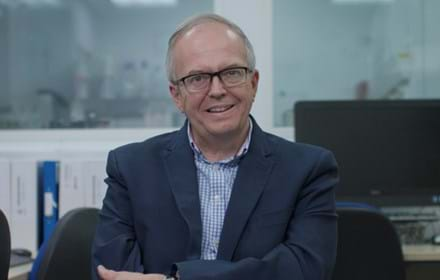
Continuous glucose monitoring recommendation for people newly diagnosed with type 2 diabetes
Report from healthcare professionals suggests technology could be “essential” for people living with type 2 diabetes.
A recently published report has highlighted the potential benefit of using continuous glucose monitoring (CGM) for people living with type 2 diabetes.
The report by experts in diabetes healthcare said that CGM technology should be used in all people with type 2 diabetes throughout their natural history of living with the condition.
CGM technology provides real-time readings and is a technology recommended for people living with type 1 diabetes being treated with insulin.
European diabetes experts who authored the report in Nature Reviews Endocrinology now suggest CGM can also be an essential tool “as soon as possible” after diagnosis of type 2 diabetes.
CGM can allow doctors to establish the glucose profile of their patient, decide on initial treatment plan and evaluate after 14 days. It also provides education on the response of glucose levels to diet and exercise.
Researchers found that early intensive glucose control as soon as possible after diagnosis of type 2 diabetes could significantly reduce the risk of developing microvascular complications of diabetes, including retinopathy, chronic kidney disease or neuropathy.
In addition, studies found that early glucose control for people with type 2 diabetes could result in sustained reductions in risk of myocardial infarction and death from any cause.

Glucose monitoring technology eliminates the need for routine fingerpricks to measure glucose levels for people living with diabetes.
If intensive treatment for people newly diagnosed with type 2 diabetes was not actioned after one-year figures showed higher risks if HbA1c levels were greater than 7.5% (58 mmol/mol) were associated with a 67% increased risk of myocardial infarction, a 51% increase in risk of stroke and a 64% increased risk of heart failure, compared to those who received earlier treatment intensification.
Therefore, researchers believed that early glycaemic control was critical for long-term prevention of life-changing health-related complications for people with type 2 diabetes, and to reduce the associated costs of hospital admissions.
A key benefit for people living with type 2 diabetes using CGM is that users are able to receive immediate biofeedback, such as visible minute-by-minute glucose readings and trend arrows that indicate what their glucose levels are and how rapidly they are changing.
These reports helps users adapt their diet and physical activities to improve their daily glucose profiles, in a way that is not possible with infrequent finger prick testing.
Making such decisions assisted by CGM technology has also been shown to be effective for people with type 2 diabetes on basal-insulin therapy and studies indicate this is similarly motivational in those with newly-diagnosed type 2 diabetes.
Neil Harris, general manager for Abbott’s diabetes care business in the UK and Ireland, said: “Recent reports indicate that up to 1 million people could be living with type 2 diabetes in the UK without knowing, so we hope the findings of this research will help health leaders rethink how we manage one of Britain’s biggest health threats.
“We have seen the impact access to real-time glucose data can have on driving better outcomes over the past decade, through actionable insights and behavioural change. It is clear we have so much further to go in the drive for broadened access to sensing technology for the millions of people with diabetes who could benefit from it. This report expands our knowledge of the application of CGM technology and shows that we’re only scratching the surface when it comes to understanding its true potential.”
NICE updated its guidelines to recommend sensor-based glucose monitoring systems for people with type 2 diabetes who are administering multiple daily injections and meet certain criteria.
Before this update, people, such as Ken Tait from Bromley, who has lived with type 2 diabetes since 1999 and has been on multiple daily injections since 2003, relied on finger pricking to test their glucose levels.
In 2021, Ken decided to self-fund the use of CGM which, at the time, was only available via the NHS to some people with type 1 diabetes.
Ken has now become a known advocate for widening access to CGM technology within the diabetes community.
Ken said: “For many years, managing my diabetes was pure guesswork. I’d get a result from finger pricking but I didn’t know if the reading meant my glucose levels were going up or down or staying the same.
“When I started using the CGM system, it was a complete revelation to me. For the first time in my life with diabetes, I could see what was happening in my body. How the food I ate and exercise I did would affect my glucose levels, and various other information that was now available to help me manage my diabetes 24/7, 365 days a year.
“To now see reports coming out recommending the use of CGM technology in all people with type 2 diabetes feels like a huge step forward and one I completely support. It has been invaluable to me, and I know it would be for many others living with type 2 diabetes, no matter what stage they are at.”
Read the report in Nature Reviews Endocrinology
Read the NICE guidelines for type 2 diabetes
Recent News


